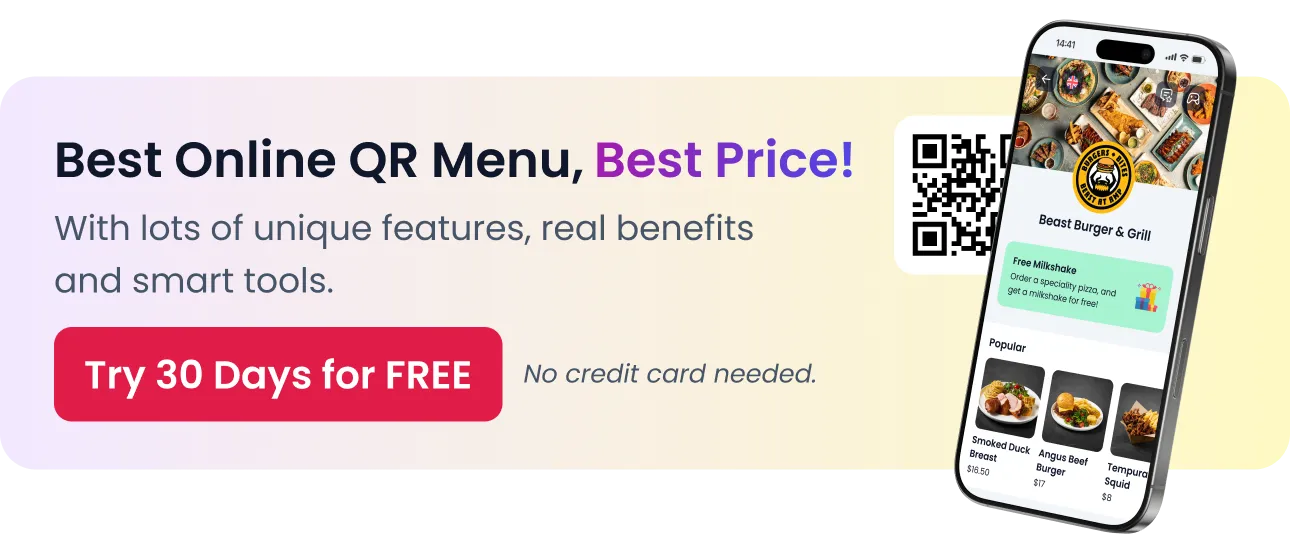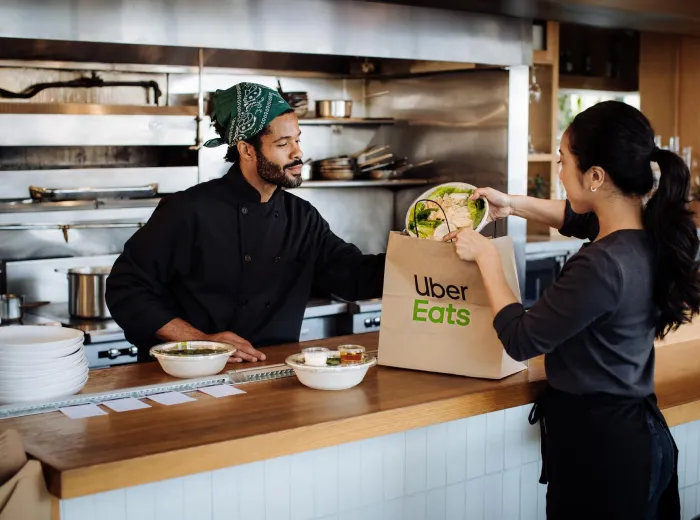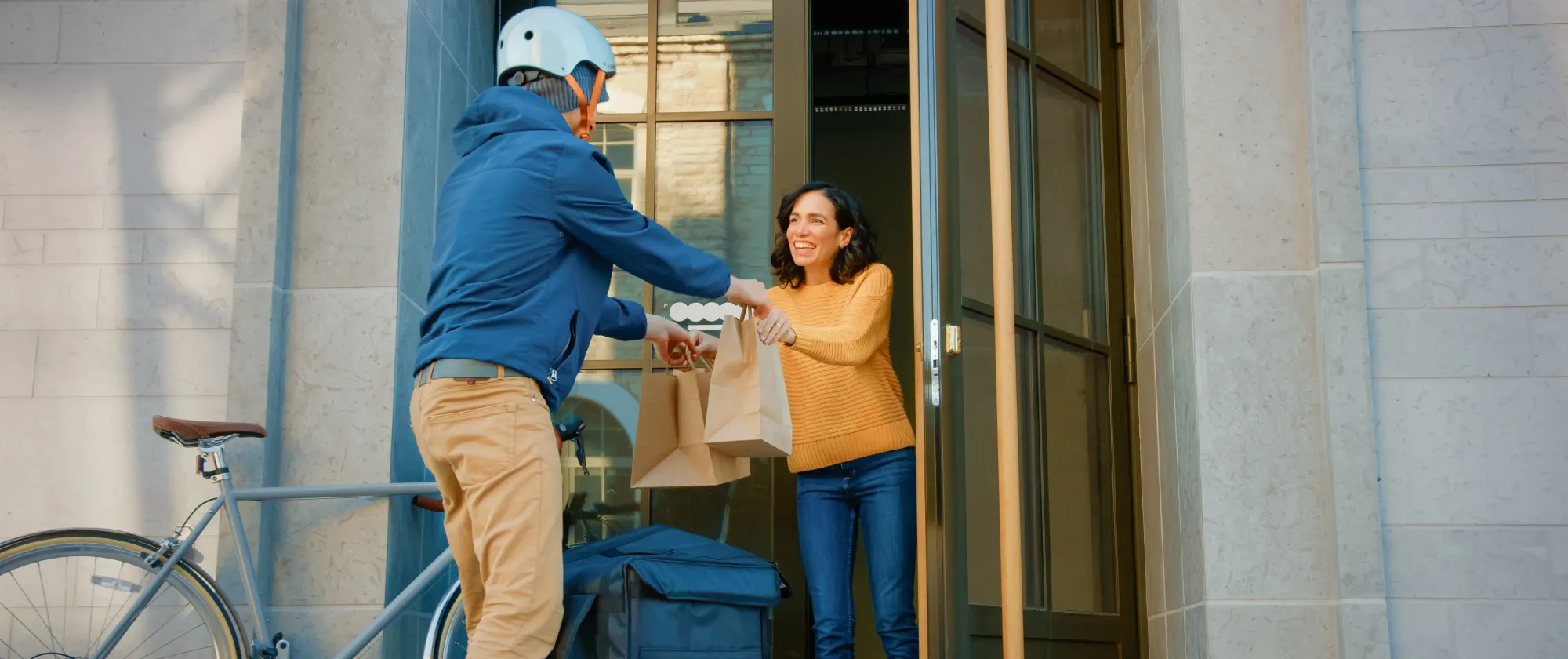
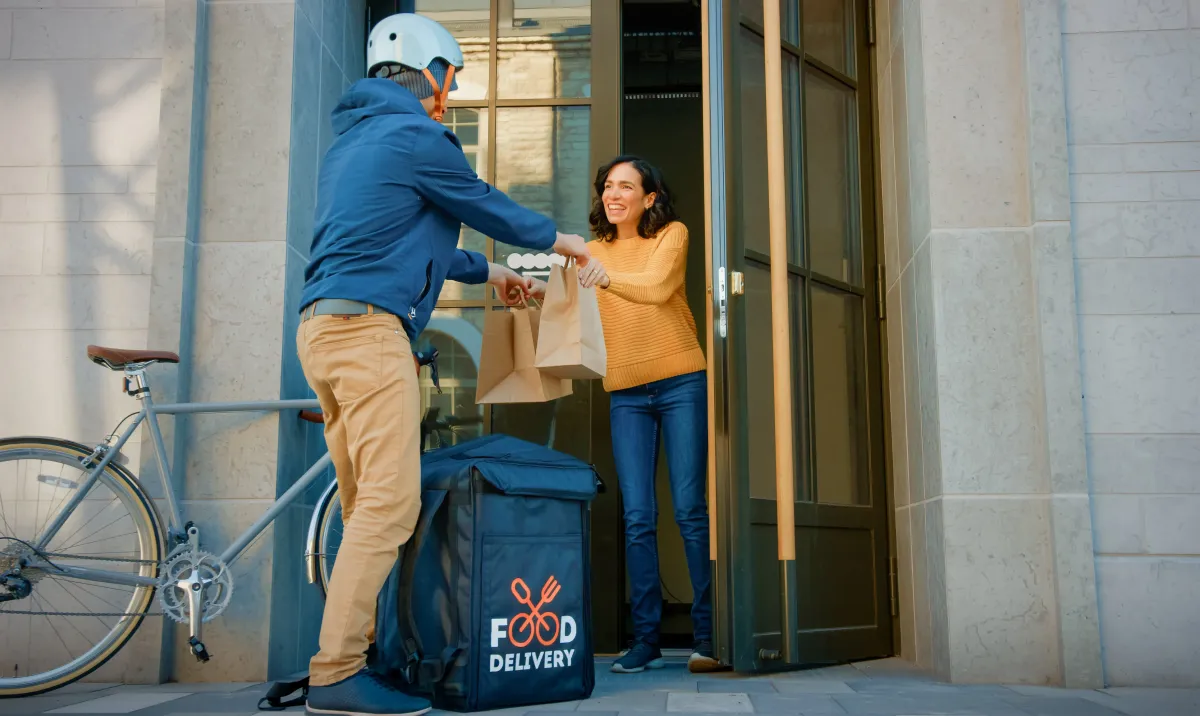
The Most Popular Food Delivery Apps in Ireland | Updated 2025 List
In recent years, food delivery has gone from a “nice-to-have” to an essential channel for restaurants across Ireland. Whether you’re running a high-end bistro in Galway or a fast-casual burger spot in Dublin, having a presence on one or more delivery apps is now critical for growth, visibility, and staying competitive.
But with so many platforms available — each with its own pricing, reach, and quirks — how do you know which one is right for your business? That’s exactly what this guide is here to help with. We’ll walk through the most popular food delivery apps in Ireland as of 2025, break down what they offer restaurant owners, and help you understand the real costs (and opportunities) behind joining them.
Whether you’re looking to expand your reach, improve your margins, or simply stop losing orders to your competitors — this article offers the clarity and practical guidance you need to make informed decisions.
Why Delivery Platforms Matter for Irish Restaurants
Food delivery isn’t just about convenience anymore — it’s about survival and growth. Irish diners have become increasingly reliant on delivery platforms, not just in cities like Dublin and Cork, but across towns and suburbs too. For restaurants, that means new revenue streams, a wider customer base, and brand exposure far beyond their own dining room. Below, we break down why delivery apps are such a big deal in today’s market.
Consumer Habits Have Changed — Permanently
Irish customers now expect food to be available at the tap of a screen.
- Takeaway is no longer reserved for weekends — midweek deliveries have surged.
- Diners want the same quality at home as they get in person.
- Many younger consumers prefer to discover new restaurants via apps, not by walking past them.
Even post-lockdown, delivery demand remains strong, driven by convenience, busy lifestyles, and app-led discovery. Restaurants that ignore this trend risk becoming invisible to a large part of their market.
Delivery Adds a New Revenue Channel (When Managed Right)
Platforms can generate 20–40% of total revenue for some Irish restaurants.
- Great for reaching customers who wouldn’t otherwise visit in person
- Helps fill in slow times or days with fewer dine-in guests
- Easier to test new menu items or price points without redesigning your physical menu
Of course, profitability depends on how you structure your pricing, prep, and staffing — but when handled correctly, delivery can turn into a healthy profit center rather than a cost burden.
It Levels the Playing Field for Smaller Operators
A one-location café in Galway can compete with big chains on the same screen.
- Equal visibility on app listings
- Access to promotions and featured placements
- Built-in customer base without needing your own marketing team
Delivery apps give independent restaurants access to technology, logistics, and customer reach that would otherwise cost tens of thousands to build from scratch.
Visibility and Brand Awareness Beyond Your Premises
Being on a delivery app is also free advertising — even if people don’t order.
- Your logo, menu, and photos appear in search results
- Customers often browse apps before deciding where to dine in
- Positive app reviews can influence offline traffic
In other words, platforms aren’t just about delivery — they’re discovery tools that can drive real-world foot traffic and long-term customer loyalty.
Consumer Data and Feedback You Can Actually Use
Many platforms offer access to insights like:
- Your most popular dishes
- Peak ordering times
- Customer review trends
- Repeat order rates
Used correctly, this data can guide menu updates, pricing adjustments, and even staffing decisions. It’s like having built-in market research, without hiring an outside firm.
Delivery isn’t a trend — it’s infrastructure. And for Irish restaurants looking to grow sustainably in 2025, getting onto the right platforms (with the right strategy) is more essential than ever.
What to Look for in a Food Delivery App Partner
Choosing the right delivery platform isn’t just about picking the most popular name — it’s about finding the best fit for your restaurant’s size, concept, location, and operational style. A strong partnership with a delivery app can help grow your revenue and streamline your operations, while a bad fit can eat away at your margins and cause headaches during service. Here’s what to evaluate before signing up.
Commission Fees vs. Overall Value
Don’t just ask “How much do they charge?” — ask what you get in return.
- Commission rates in Ireland usually range from 15% to 35% per order
- Higher commissions may come with built-in delivery logistics, marketing support, and app visibility
- Watch for hidden costs: promo fees, setup charges, or extra fees for hardware
A lower commission doesn’t always mean higher profit — it could mean you’re doing more work with less support. Always balance cost with benefits.
Local Market Reach and Customer Base
Is the platform popular in your area, not just nationally?
- Some apps dominate urban areas (e.g. Deliveroo in Dublin), while others perform better in small towns
- Ask other local business owners which platforms bring in volume
- Check app store ratings and reviews to see how many locals are actively using it
It’s no good being listed on a sleek platform if your target customers never open the app.
Ease of Integration with Your Workflow
Will the platform fit your kitchen’s rhythm, or disrupt it?
- Does it integrate with your POS or printer system?
- Can you manage orders from multiple platforms in one place?
- Is there tablet overload? (Too many screens for staff to juggle)
Look for systems that streamline order flow, not create new bottlenecks. Compatibility with tools like Otter, Deliverect, or Square can make life much easier.
Customer Service and Restaurant Support
When something goes wrong — and it will — how fast do they respond?
- Do they have real-time support during peak hours?
- Is there a restaurant success team you can contact?
- How are refunds and disputes handled — fairly and clearly?
Great support is often underrated until you hit your first major issue. Make sure you’re not left on hold when the kitchen’s in chaos.
Promotions, Insights, and Growth Tools
Can the platform help you grow, or is it just a passive listing?
- Can you run discounts, bundles, or loyalty offers?
- Do you get analytics on order trends, bestsellers, and customer behaviour?
- Can you customize your menu by daypart or adjust availability in real time?
Some platforms are better for visibility and upselling, while others leave the heavy lifting to you. Go with one that acts like a partner, not just a listing board.
Choosing the right food delivery app partner is a strategic business decision — not just a tech signup. Think long-term, ask the right questions, and don’t be afraid to negotiate. The platform that works well for your neighbour may not work for you — so choose based on your goals, not just popularity.
Just Eat Ireland — The Veteran Market Leader
Just Eat has long held the crown as Ireland’s most established and widely used food delivery platform. Operating in the country since 2008, it’s built a strong presence in both major cities and smaller towns — making it a go-to choice for many independent restaurants, chains, and takeaways. If you’re new to delivery or want to cast a wide net, Just Eat is often the first place to start.
Where It Operates
Just Eat has nationwide reach — not just in urban centres.
- Strong presence in Dublin, Cork, Limerick, Galway, and Waterford
- Also widely used in suburbs and regional towns, where competitors like Uber Eats or Deliveroo may not be present
- Ideal for takeaway-heavy cuisines: pizza, burgers, Chinese, Indian, fish & chips
If your restaurant is outside a major city, this platform may be your best bet in terms of volume and app familiarity.
Commission and Pricing Structure
Simple, but potentially high depending on your deal.
- Typical commission ranges from 12% to 30%+ depending on the agreement
- No delivery logistics — restaurants are usually responsible for hiring their own drivers
- Additional charges may apply for advertising boosts, menu updates, or priority listings
Keep in mind that because Just Eat doesn’t usually offer delivery drivers, you’ll need to either staff your own or use a third-party courier service — adding to your costs.
How Orders Are Fulfilled
You deliver, they handle the tech.
- Just Eat is a marketplace-only model (in most cases in Ireland)
- You manage your own delivery logistics — timing, packaging, staffing
- Great for restaurants already set up for takeaway or that want control over the customer experience
This model works well for businesses that already have delivery drivers and prefer not to pay additional logistics fees to a third-party courier service.
Marketing and Visibility Tools
Pay-to-play exposure is available, but not always cheap.
- Sponsored listings and priority placement in search results
- Time-sensitive deals and promo codes (with commission on the discounted value)
- Restaurant reviews and star ratings influence placement
Using Just Eat’s promotional tools can boost visibility, but without careful planning, they can also eat into margins quickly.
Pros and Cons for Restaurant Owners
Pros:
- Largest customer base in Ireland
- Good coverage in suburban and rural areas
- Works well for takeaway-first restaurants
- Familiar to most Irish consumers
Cons:
- You’re responsible for delivery and packaging
- Commission rates can be steep without negotiation
- Platform support can be slow during peak times
- Not ideal if you want full control of the customer data
Bottom line: Just Eat remains the heavyweight in Ireland’s food delivery scene. It’s a strong choice for restaurants that already do takeaway — or want to start — and have the capacity to handle deliveries in-house. While the commissions can be high, the potential reach and order volume often make it worthwhile, especially outside the urban centres dominated by newer apps.
Deliveroo — Popular in Urban Ireland
Deliveroo has carved out a significant share of Ireland’s delivery market, particularly in urban hubs. With its sleek interface, fast delivery promise, and strong brand presence, it appeals to both younger diners and premium food lovers. For restaurants located in city centres or densely populated neighbourhoods, Deliveroo offers access to a loyal, app-savvy customer base — but it comes with its own unique structure and fees.
Cities Where Deliveroo Performs Best
Deliveroo thrives in densely populated and higher-income areas.
- Strong presence in Dublin, Cork, Galway, and Limerick
- Less useful in suburban or rural areas — coverage can be inconsistent
- Great for restaurants near university zones, central business districts, and residential hubs
If your location has high foot traffic and delivery demand, Deliveroo could become a major driver of revenue — especially during lunch and dinner rushes.
Commission Rates and How Pricing Works
The model is delivery-inclusive, but it’s not cheap.
- Typical commission rates range between 25% and 35% per order
- This includes logistics — Deliveroo handles the couriers
- Option to increase visibility through Boost promotions (additional cost)
- Payment cycles are usually weekly, with bank transfer
While the fees are higher than some competitors, Deliveroo’s logistics and exposure can justify the cost — especially for restaurants that don’t want to hire their own drivers.
How Deliveroo Editions and Ghost Kitchens Work
Virtual brands and shared kitchen space offer expansion opportunities.
- Deliveroo Editions: dark kitchens managed by Deliveroo for high-demand zones
- Useful for scaling without opening a full second location
- Some Irish restaurants are testing ghost kitchen-only menus for new concepts or brands
This can be a game-changer if you’re trying to grow into new neighbourhoods or test new cuisine ideas without a large upfront investment.
App Tools for Restaurants
Deliveroo offers decent digital tools to help you optimize.
- Performance analytics: average order value, busiest hours, top dishes
- Menu management: make changes and schedule availability by time of day
- Promotional campaigns: limited-time discounts, bundles, or delivery fee reductions
The analytics are especially useful for spotting patterns and adjusting your menu or hours to maximise return.
Strengths and Weaknesses for Restaurant Owners
Pros:
- Full delivery solution — no need for your own couriers
- Well-known brand with strong user base in cities
- Tools for growth, including ghost kitchens and data insights
- Customer service for diners is handled by Deliveroo
Cons:
- High commissions can erode profit margins
- Limited or no coverage in rural Ireland
- Some restaurants feel “locked in” to Deliveroo’s algorithm and promotional pressure
- Minimal control over the delivery experience
Bottom line: Deliveroo is a powerful option for restaurants in Irish cities, especially those without delivery infrastructure. While it’s more expensive than Just Eat on a per-order basis, the convenience, reach, and branding support can be worth it — particularly if you’re targeting a younger, urban demographic that lives on their phone.
Uber Eats — Gaining Ground in Ireland
Uber Eats may have entered the Irish market later than its competitors, but it’s rapidly expanding — particularly in Dublin and other large cities. Backed by Uber’s powerful logistics infrastructure and user base, it’s an attractive option for restaurants that want delivery handled from start to finish. As of 2025, more Irish restaurants are giving Uber Eats a second look, especially with its flexible features and sleek technology.
Where Uber Eats Is Currently Active
Uber Eats is focused on major Irish urban markets.
- Most active in Dublin, Cork, Limerick, and Galway
- Still expanding into new zones and suburban areas in 2025
- Particularly popular in areas with strong Uber ride-sharing penetration
If you’re in or near a major city, chances are Uber Eats is already active — and if not, it may be launching soon.
Commission Structure and Delivery Model
Uber Eats is a full-service platform, but expect higher fees.
- Commission rates typically range from 25% to 35% per delivery
- Uber Eats provides couriers, so you don’t need to hire drivers
- You may pay additional charges for marketing boosts and delivery prioritization
- No monthly flat fees, but each order carries a platform cut
Uber Eats often promotes dynamic pricing and visibility tools, but these come at a cost. It’s crucial to run the numbers and understand your margin after all fees are applied.
Technology and User Experience
Seamless tech is one of Uber Eats’ strongest advantages.
- Easy-to-use restaurant dashboard for managing orders and menu updates
- Real-time tracking for customers and restaurants
- Integrated promotions and upselling suggestions
- POS integration available with select systems
Uber’s tech is reliable, fast, and familiar — especially to customers already using the Uber app for rides. That dual exposure can lead to increased order volume.
Marketing Features and App Visibility
Uber Eats offers more control over your marketing than some rivals.
- Boosted listings to gain prime placement
- Promotions engine for discounts, bundles, and delivery fee waivers
- Targeted ads to reach frequent customers or re-engage lapsed ones
- Transparent performance reports with actionable insights
While these tools are powerful, using them wisely is key — otherwise, you may be trading visibility for unsustainable margins.
Pros and Cons for Restaurant Owners
Pros:
- Full delivery handled by Uber’s courier network
- Dual exposure from Uber rides and food delivery
- Great interface and real-time tracking
- Flexible promotional tools and analytics
Cons:
- High commission fees can pressure smaller operators
- Limited reach outside urban centres (for now)
- Some restaurants report inconsistent courier reliability in early-launch zones
- Customer data stays mostly with Uber
Bottom line: Uber Eats is quickly establishing itself as a major player in Ireland’s delivery landscape. If your restaurant is in a city and you’re looking for a full-service delivery solution with robust tech and marketing features, Uber Eats can be a smart addition — as long as your pricing strategy protects your margins.
Flipdish — An Irish-Owned Alternative
Flipdish isn’t your typical food delivery app — and that’s exactly why many Irish restaurant owners are turning to it. Headquartered in Dublin, Flipdish provides white-label ordering systems that let restaurants take control of their own online ordering, branding, and customer data. Instead of acting as a marketplace aggregator, Flipdish gives you the tools to build your own app or web ordering system while still offering delivery through courier partners.
If you want more independence and better margins, Flipdish deserves serious consideration.
How Flipdish Differs from Other Platforms
Flipdish empowers restaurants to own their delivery channel, not rent it.
- No public app or competitive marketplace — customers order directly from you
- You get your own branded website or mobile app powered by Flipdish
- Orders are commission-free or low-cost compared to aggregator platforms
- Delivery can be handled in-house or via courier integrations
This model is ideal for restaurants looking to reduce reliance on Just Eat, Deliveroo, or Uber Eats — or exit them altogether.
Benefits of Owning Your Customer Data
Unlike aggregators, Flipdish lets you build long-term customer relationships.
- Collect and retain email addresses, phone numbers, and order history
- Run SMS and email campaigns directly from the dashboard
- Implement loyalty programs, vouchers, and personalized offers
- Analyze order patterns and customer behavior with clear, actionable insights
In short, Flipdish gives you the marketing tools that other platforms keep for themselves.
Pricing and Cost Structure
More transparent — but there are still fees to understand.
- Setup costs for branding and integration may apply
- Ongoing pricing is typically monthly (flat fee) plus transaction fees
- No commission per order like marketplace apps
- Optional add-ons like kiosk systems or in-store QR menus available
Although the upfront investment is higher, Flipdish often becomes more cost-effective in the long run — especially as your order volume grows.
Ideal Restaurant Types for Flipdish
Not every restaurant is a perfect fit — but many are.
- Great for takeaways, cafes, quick service spots, and multi-location brands
- Best for operators ready to invest in building their customer base
- Not ideal if you rely heavily on aggregator discovery (e.g., new or unknown brands)
Restaurants with an existing loyal following or strong offline reputation can leverage Flipdish to bring customers into a branded, controlled environment.
Pros and Cons for Restaurant Owners
Pros:
- You control your brand, pricing, and promotions
- Higher long-term margins with no marketplace commission
- Own your customer database and grow loyalty
- Local support from an Irish-based company
Cons:
- Requires marketing effort — customers won’t “find” you like they would on a big app
- Initial setup costs and learning curve
- Delivery logistics still need to be managed or outsourced
- Less plug-and-play than other third-party platforms
Bottom line: Flipdish is a powerful tool for Irish restaurant owners who want more control, better margins, and direct customer relationships. It won’t hand you orders on a silver platter — you’ll have to promote your platform — but the long-term payoff can be substantial. If you’re ready to build your own digital presence instead of competing in crowded delivery marketplaces, Flipdish may be your smartest move.
Other Platforms You Should Know About
While Just Eat, Deliveroo, Uber Eats, and Flipdish dominate the Irish delivery scene, several smaller or emerging platforms are worth exploring — especially if you’re targeting niche audiences or looking for alternatives that offer more flexibility or lower costs. These platforms may not have the massive user bases of the big players, but they often offer unique advantages, better support, or innovative features.
Here are a few worth keeping on your radar in 2025.
Zupa — Built for Local and Independent Restaurants
Zupa focuses on serving small chains and independent food businesses in Ireland.
- Offers white-label solutions like Flipdish, but often with more personalised support
- Typically targets regional markets or specific cuisine types
- Works well for restaurants looking to digitize without joining a major aggregator
If you’re in a town underserved by the big apps or want a low-pressure digital ordering tool, Zupa could be a strong fit.
Slerp — Perfect for Premium and Boutique Brands
Originally UK-based, Slerp is starting to find traction with high-end cafes and artisan bakeries in Ireland.
- Supports click-and-collect, nationwide delivery, and scheduled orders
- Built for hospitality brands that want more than just takeaway — ideal for premium gift boxes, event menus, and pre-orders
- Offers integrations with Shopify, making it great for F&B businesses with an e-commerce component
If you’re selling more than just food — like coffee beans, baked goods, or gift hampers — Slerp offers a unique hybrid of delivery and retail.
Wolt — Growing Buzz, But Limited Rollout
Wolt is known across Europe for its excellent user experience and sleek interface.
- As of 2025, it’s not widely active in Ireland, but there’s growing interest in markets like Dublin
- Operates similarly to Deliveroo, handling delivery and customer service
- If Wolt enters your area, it could be a viable alternative with competitive pricing
Restaurants in city centres should monitor Wolt’s expansion. Early adopters in new zones often benefit from prominent app placement and onboarding support.
Other Niche or Regional Apps
Depending on your concept and location, some smaller platforms may be worth exploring:
- Local Eats: occasionally active in small towns or counties with limited big-app presence
- TablePath or OrderYOYO: designed for low-cost online ordering without delivery logistics
- Flipdish competitors offering kiosk systems, SMS ordering, or QR menu integration
These platforms won’t drive hundreds of orders a day, but they may help you reduce aggregator dependence or reach loyal customers directly.
Bottom line: The big names get the headlines, but smaller platforms can offer hidden gems — lower fees, better support, and niche targeting. If your restaurant has specific needs or wants to diversify beyond the crowded marketplace model, don’t overlook these alternatives. Sometimes, the best tech partner is the one who knows your street, not just your sector.
What Are the Real Costs? A Side-by-Side Breakdown
Joining a food delivery platform can open the door to more customers — but it also comes with a web of fees that many restaurant owners underestimate. From commissions and promotions to hidden service charges, the actual cost of using these platforms often goes beyond the headline rate.
Here’s a practical, side-by-side breakdown of what you can expect to pay on Ireland’s most popular delivery platforms in 2025.
Commission Fees — The Biggest Bite
This is the most visible cost — a percentage taken from every order.
- Just Eat: 12%–30% (usually lower if you handle your own delivery)
- Deliveroo: 25%–35% (includes logistics)
- Uber Eats: 25%–35% (includes logistics)
- Flipdish: No per-order commission, but charges monthly or per-transaction fees
- Others (Zupa, Slerp): Varies — often flat rates or lower commission
Keep in mind: these percentages are typically taken before VAT and card fees are deducted, which can further reduce your net revenue.
Delivery Logistics — Who Covers the Cost?
Depending on the platform, you may be responsible for your own delivery.
- Just Eat: Usually restaurant handles delivery (you pay drivers)
- Deliveroo & Uber Eats: Platform provides couriers (cost included in higher commission)
- Flipdish: You manage delivery or partner with courier services
- Others: Varies — some offer optional third-party delivery partners
If you’re managing your own delivery team, factor in wages, fuel, insurance, and scheduling overhead.
Setup, Monthly, and Hidden Fees
Beyond commissions, here are some other costs to watch:
| Platform | Setup Fee | Monthly Fee | Menu/Tablet Costs |
|---|---|---|---|
| Just Eat | Usually waived | None | Tablet deposit may apply |
| Deliveroo | None | None | Tablet provided |
| Uber Eats | None | None | Hardware optional |
| Flipdish | €200–€1,000+ | €30–€100+ | POS and kiosk add-ons |
| Zupa/Slerp | Varies | May apply | Depends on features |
Some platforms may also charge for onboarding assistance, menu photos, or integration support. Always ask for a full fee sheet before signing.
Payment Schedules and Processing
Cash flow matters — so timing is key.
- Just Eat: Weekly payouts
- Deliveroo: Weekly or bi-weekly, depending on bank and region
- Uber Eats: Weekly, sometimes daily for high-volume accounts
- Flipdish: Often instant or next-day (Stripe or direct bank transfers)
- Others: Vary by platform and payment provider
Also, watch for payment processing fees — typically 1.4% to 2.9% depending on the card provider and country.
Optional but Costly: Promotions and Boosts
Many platforms offer tools to improve visibility — at a price.
- Featured Listings: Appear higher in search (Just Eat, Deliveroo, Uber Eats)
- First-order discounts: 10%–25% off, often covered by you
- Bundle offers: e.g. €10 lunch deal — often platform-recommended
- Delivery fee reductions: Encourages orders but may come from your margin
While these tools can drive sales, overuse can seriously reduce profitability if not carefully managed.
Sample Comparison — €25 Order Breakdown
Let’s look at a simplified example of how a €25 order plays out across platforms:
| Platform | Commission | Net After Commission | Final After Fees (Est.) |
|---|---|---|---|
| Just Eat | 20% (€5.00) | €20.00 | ~€18.50 (card + VAT fees) |
| Deliveroo | 30% (€7.50) | €17.50 | ~€15.80 |
| Uber Eats | 30% (€7.50) | €17.50 | ~€15.80 |
| Flipdish | €1.00 flat | €24.00 | ~€22.50 |
Estimates may vary depending on VAT rate, card processor, and specific deal terms.
Bottom line: Delivery platforms can be profitable — but only if you fully understand the costs and plan for them. Know your margins, test pricing carefully, and treat every new channel as a business case. If you’re blindly accepting every promotion or discount offer without doing the math, your online sales could end up costing more than they earn.
How to Boost Visibility and Sales on These Apps
Being listed on a delivery app is only half the battle — getting customers to notice and order from your restaurant is where the real work (and payoff) begins. These platforms prioritize high-performing listings, eye-catching menus, and promotional activity. The good news? You can take specific, proven steps to rise in the rankings, increase conversions, and drive repeat business — without slashing your margins.
Get Featured and Stay Top-of-Mind
Paid placements can put your restaurant at the top of app searches.
- Use “Boost” or “Featured” listings to show up first in your category or neighborhood
- Target peak days (Fridays, weekends) to maximize exposure
- Some platforms offer pay-per-click (PPC) models; others charge a flat weekly fee
- Bundle with in-app promotions for more impact
Just remember: paid placement doesn’t guarantee long-term sales — your menu and reviews need to convert that visibility into orders.
Photos and Menu Descriptions That Convert
You eat with your eyes first — especially online.
- Use high-quality, appetizing photos for your top-selling dishes
- Keep names short but descriptive: “Korean BBQ Burger” sells better than “House Special”
- Add ingredient highlights and taste notes: e.g., “Spicy tomato sauce with fresh basil”
- Group your menu by mealtime or occasion: Lunch Deals, Family Bundles, Late-Night Cravings
Pro tip: Update photos seasonally or when launching new items. A fresh look boosts click-through rates.
Offer Deals Without Killing Your Margins
Smart discounts attract new customers — and keep them coming back.
- Use “first-order” promos to hook new users (often partially funded by the platform)
- Bundle meals or sides to increase average ticket size
- Offer free delivery thresholds (e.g., “Spend €20, get free delivery”)
- Use limited-time offers to create urgency (e.g., “Weekend Wings Special”)
Avoid constant deep discounts. Instead, test offers that increase order size or frequency while protecting your bottom line.
Keep Ratings and Reviews High
Your star rating directly affects your placement on most platforms.
- Ensure consistent food quality and packaging for delivery orders
- Include a personal touch — thank-you notes or free sauces go a long way
- Monitor customer reviews weekly and respond to complaints quickly
- Train staff on peak-hour handling to avoid delays that lead to negative feedback
Even a half-star drop can push your listing lower in search results, so stay on top of this.
Use Platform Tools to Your Advantage
Most apps offer underutilized tools that can give you an edge.
- Run A/B tests with different photos or pricing on top-selling dishes
- Analyze your heatmaps and peak times — and adjust staffing accordingly
- Identify repeat customers and target them with loyalty perks
- Use menu availability scheduling to simplify prep during rush hours
These tools are already built in — you just need to use them proactively, not passively.
Bottom line: Treat your delivery app presence like a storefront window — well-lit, enticing, and always maintained. With the right combination of visuals, offers, and service consistency, you can dramatically increase both your visibility and your profitability on any platform.
Managing Multiple Platforms Without Going Crazy
Many restaurants in Ireland today list their business on two, three, or even more delivery apps to maximize visibility and reach. But with more platforms comes more complexity — more tablets, more notifications, more staff errors, and more operational headaches. Without a clear system, managing multiple delivery apps can quickly overwhelm your team and impact service quality.
Here’s how to stay in control while scaling your delivery presence.
Use an Aggregator Tool to Centralize Orders
Avoid “tablet chaos” with a centralized solution.
- Tools like Otter, Deliverect, and Cuboh let you manage all delivery platforms through a single dashboard
- Orders from Uber Eats, Deliveroo, Just Eat, and others flow into one tablet or integrate with your POS
- Menu changes and pricing updates can be pushed to all platforms at once
This can save your staff hours per week and dramatically reduce order mistakes, delays, and missed tickets.
Integrate with Your POS (When Possible)
If your point-of-sale system supports it, integrate directly with delivery apps.
- Systems like Square, Lightspeed, and Toast offer integrations with major platforms
- Orders print automatically in the kitchen — no need to re-enter them manually
- Helps keep inventory, reporting, and taxes synced
Ask your POS provider what integrations are available — even partial automation can relieve pressure on your staff during busy periods.
Streamline Menu Management
Maintaining consistent, accurate menus across platforms is key.
- Use digital tools to create a “master menu” you can edit in one place
- Schedule menu availability by day or time (e.g., lunch specials only from 12–3pm)
- Disable sold-out items in real-time to avoid cancellations and bad reviews
Consistency in item names, descriptions, and photos builds brand trust and helps reduce confusion for both staff and customers.
Train Your Team for Multi-App Operations
Technology is helpful — but your team still needs the right habits.
- Assign a dedicated team member per shift to monitor delivery channels
- Post a printed workflow cheat sheet in the kitchen for reference
- Do mock “order simulations” to practice fulfillment under pressure
- Create escalation rules for issues (e.g., what to do if a driver is late or a platform goes offline)
Smooth operations depend on people just as much as platforms — don’t skip the training.
Monitor Performance Across All Platforms
Track which platforms are actually making you money.
- Compare average order value, commission rates, and refund rates
- Track delivery times and customer complaints by app
- If one platform consistently underperforms, consider pausing or renegotiating
Not all apps will serve you equally. Focus your energy (and ad budget) on the ones delivering real value.
Bottom line: Managing multiple delivery platforms doesn’t have to be chaotic — but it does require planning, the right tech tools, and solid team procedures. The key is integration, not duplication. Get your systems talking to each other, and your staff working with confidence, and you can scale delivery without sacrificing sanity.
Should You Leave or Stay on a Platform Long-Term?
Joining a delivery platform is easy — but deciding whether to stick with it long-term is more complex. Many Irish restaurant owners find themselves locked into high commission rates, limited control, or declining profits over time. So how do you know when it’s worth staying — and when it’s smarter to walk away?
Let’s break it down.
Signs It’s Time to Reevaluate Your Platform
If any of these are happening, it might be time to reassess:
- Declining margins even as order volume increases
- Unresponsive support or frequent technical issues
- Increased cancellations, late deliveries, or customer complaints
- No access to customer data or lack of transparency
- You feel like you’re dependent on discounts just to get noticed
Sometimes, a platform starts strong but becomes less beneficial as your business evolves or the competition heats up.
When It Makes Sense to Stick With It
Some platforms genuinely help restaurants grow — if the math works.
- The commissions are manageable and built into your pricing
- You’re getting consistent, high-volume orders
- Their couriers are reliable and reflect well on your brand
- The platform provides useful marketing and analytics tools
- You’ve tested alternatives, and this one outperforms
If a delivery app consistently generates profits, supports your operations, and helps you reach new customers, it’s still a valuable partner.
Consider a Hybrid Strategy
You don’t have to go all-in or all-out — blending platforms can reduce risk.
- Keep one major aggregator (e.g. Deliveroo) for exposure
- Run Flipdish or your own ordering site to retain customer data
- Encourage repeat customers to switch to direct ordering (with loyalty perks or discounts)
- Slowly reduce promo spending on platforms while building your owned audience
This approach gives you the best of both worlds — reach and independence — without being stuck.
How to Exit Without Losing Customers
If you plan to leave a platform, do it smartly.
- Promote your direct ordering channels before disconnecting
- Offer an exclusive deal or loyalty points to transition users
- Use packaging inserts or in-app messages to communicate your move
- Time your exit during a slower month, not peak holiday season
Never just “go dark” — it can confuse customers and lead to lost sales. Transition strategically and measure the results.
Bottom line: Delivery apps are tools — not business partners for life. The best choice is the one that fits your current goals, your kitchen’s capacity, and your financial model. Monitor performance regularly, stay flexible, and don’t be afraid to change course when the numbers or service quality no longer add up.
Key Questions to Ask Before Signing Up
Before you jump into any delivery platform partnership, take a step back. It’s tempting to sign up just because your competitors are doing it — or because a sales rep promises you more orders — but without asking the right questions, you could be locking yourself into a costly and inflexible relationship.
Use the checklist below to evaluate whether a delivery app is a good fit for your restaurant’s needs, goals, and margins.
Is My Area Covered — and Actively Used?
Not all platforms have equal reach across Ireland.
- Is your delivery zone fully covered by the app’s couriers?
- Are there enough active users in your town or neighbourhood to justify it?
- Ask other local business owners about volume and visibility on that platform
Don’t assume national presence means local performance. Coverage maps and real-world feedback are key.
What Will It Cost Me Per Order — Fully Loaded?
Get clarity on the true cost, not just the headline commission.
- What’s the base commission rate, and are there add-on fees for boosts or delivery?
- Are there setup or monthly fees, or device rentals?
- What about processing fees, VAT, or card charges?
Request a sample cost breakdown for a typical order — then compare it to your food and labor costs to ensure you’re not eroding your margin.
Who Handles the Delivery and How Reliable Are They?
Your food is only as good as the person delivering it.
- Will you need to hire your own drivers, or does the platform provide logistics?
- How are couriers trained, rated, and held accountable?
- What happens when a courier is late, rude, or drops the ball?
A bad delivery experience reflects on your brand — not the platform’s.
Do I Get Access to My Customer Data?
Owning your audience is a long-term business advantage.
- Will you get customer emails, phone numbers, and order history?
- Can you run SMS or email campaigns to re-engage lapsed users?
- Or will the platform control the relationship and limit your marketing?
If data access is restricted, consider running a direct ordering channel alongside the app to build your own list.
Can I Opt Out or Change Plans Later?
You need flexibility — not handcuffs.
- Are there long-term contracts, or can you cancel anytime?
- Is there a trial period or performance review option after the first few months?
- Can you adjust commission or promotional spend based on seasonality?
Look for transparency and avoid agreements that lock you in with little recourse.
Will I Have Real Support When I Need It?
Customer service isn’t just for your diners — it’s for you too.
- Is there a dedicated restaurant support line during service hours?
- What’s the average response time for issues or chargebacks?
- Can you get a real person on the phone, or is it all email and bots?
A fast, reliable support team is a lifeline when tech glitches or delivery problems hit during a rush.
Bottom line: Asking smart questions now prevents painful surprises later. Treat delivery platform onboarding like hiring a staff member — ask about performance, reliability, costs, and flexibility. The right platform should feel like a partner, not a burden.
Quick-Start Checklist for Joining a Delivery App
Ready to get started with a delivery platform? Whether you’re signing up for Just Eat, Deliveroo, Uber Eats, or launching your own branded Flipdish site, it pays to be prepared. A smooth onboarding process sets the stage for strong performance, fewer headaches, and better first impressions with customers.
Here’s a practical, no-fluff checklist to help you launch the right way.
✅ Choose the Right Platform(s) for Your Business
- Confirm coverage in your local area
- Evaluate commission vs service model (self-delivery or platform couriers)
- Compare features: marketing tools, insights, menu control
- Don’t overcommit — start with one or two platforms and grow from there
✅ Prepare Your Menu for Delivery
- Select dishes that travel well and hold heat
- Adjust portion sizes and packaging for delivery
- Write clear, appealing menu names and descriptions
- Upload high-quality photos — ideally real photos, not stock images
- Organize the menu into categories for easier navigation (e.g., Combos, Sides, Vegan Options)
✅ Set Up Pricing for Profitability
- Factor in commission and fees before finalizing menu prices
- Consider bundle deals to increase order value
- Use price rounding (e.g., €9.95 instead of €9.32) to appear more polished
- Test adding small upsell items (drinks, desserts, sauces)
✅ Sort Out Delivery Logistics
- If self-delivering:
- Hire and train reliable drivers
- Plan delivery zones and expected wait times
- Invest in thermal bags and branded packaging
- Hire and train reliable drivers
- If using platform couriers:
- Confirm peak-hour support
- Monitor delivery times and communicate delays
- Confirm peak-hour support
✅ Train Your Staff on Order Flow
- Assign someone to manage the delivery tablet during service
- Integrate the system with your POS or kitchen printer
- Practice how to pack and label orders correctly
- Set up an in-house process for handling delays, substitutions, or refunds
✅ Promote Your Launch
- Announce your app launch on social media and your website
- Offer first-order promos or free delivery to boost early visibility
- Use flyers or bag inserts for in-store or takeaway customers
- Ask happy customers for reviews and ratings in the app
✅ Monitor Performance and Adjust Weekly
- Track order volume, average ticket size, and delivery times
- Keep an eye on customer reviews and refund requests
- Adjust pricing, menu availability, and photos as needed
- Consider running short-term promos during slow periods
Bottom line: A strong launch builds momentum — and sets you up for long-term success on any delivery platform. With the right preparation, pricing, and promotion, your restaurant can turn food delivery into a reliable and profitable revenue stream.
Expert Tips from Irish Restaurant Owners Using These Apps
No one understands the daily realities of food delivery better than the restaurant owners living it. From tight margins and courier delays to surprise promotions and tech glitches, they’ve seen it all — and found smart ways to make delivery platforms work in their favour.
Here’s a collection of real-world advice, hard-earned lessons, and strategic insights from Irish restaurant operators who’ve built success on apps like Just Eat, Deliveroo, Uber Eats, and Flipdish.
“Build Your Pricing Around Commission — Don’t Absorb It”
“We made the mistake of keeping our dine-in prices on delivery at first. With 30% commission, we were losing money on every order.”
– Café owner, Galway
Tip: Add a delivery pricing layer that covers fees. Round up slightly and include the cost of packaging, labour, and platform cuts. Customers expect delivery prices to be slightly higher — and your margins need protection.
“Simplify Your Delivery Menu”
“We cut our delivery menu by 40%. Less stress in the kitchen, faster prep, and fewer mistakes. Orders actually went up.”
– Thai restaurant operator, Dublin
Tip: Only include dishes that travel well, are quick to prepare, and generate solid profit. Streamlined menus improve quality and speed while making ordering easier for customers.
“Negotiate — Don’t Assume the First Rate Is Final”
“We pushed back on Deliveroo’s commission and got a better rate after six months of strong sales. If you don’t ask, you don’t get.”
– Pizzeria owner, Limerick
Tip: Once you’ve proven volume or reliability, negotiate for lower fees or better visibility. Use performance data to make your case.
“Track Every Platform Separately”
“Just Eat drives the most orders, but Uber Eats gives us higher average tickets. Knowing that helped us adjust our promo strategy.”
– Casual dining owner, Cork
Tip: Use tracking sheets or POS reports to compare platforms based on order value, volume, refund rates, and reviews. This tells you where to focus your marketing or where to cut back.
“Control the Packaging — It’s Part of Your Brand”
“We stopped using generic plastic and switched to eco-friendly branded packaging. Customer reviews improved almost overnight.”
– Vegan café owner, Kilkenny
Tip: Invest in sturdy, well-branded, and sustainable packaging. It reduces complaints, improves presentation, and reinforces your identity outside the dining room.
“Encourage Repeat Orders — But Do It Off-Platform”
“Every delivery bag includes a coupon for 10% off when they order directly next time. Our Flipdish orders are growing fast.”
– Family-run restaurant, Dublin suburbs
Tip: Use delivery platforms to acquire new customers, but offer subtle incentives (flyers, loyalty cards, QR codes) to bring them to your own ordering channel next time.
Bottom line: Success on delivery platforms isn’t just about signing up — it’s about strategy. Irish restaurant owners who thrive on these apps focus on profit protection, operational simplicity, branding, and long-term customer control. Learn from their wins and missteps, and you’ll save yourself time, money, and plenty of stress.
Key Takeaways
Navigating Ireland’s food delivery landscape in 2025 can feel overwhelming — but with the right strategy, it can become a powerful growth engine for your restaurant. Here are the key points to remember:
- Just Eat offers the widest reach across Ireland and is ideal for takeaway-focused restaurants with their own drivers.
- Deliveroo is strong in urban areas and suits businesses that want full-service delivery and app visibility.
- Uber Eats is expanding fast, with strong tech and courier support, especially in Dublin and larger cities.
- Flipdish gives you control over your branding, pricing, and customer data — a smart choice for long-term independence.
- Smaller platforms like Zupa, Slerp, and Wolt may offer niche advantages, especially in underserved areas or specialty segments.
- Fees can add up fast, so it’s crucial to calculate your true costs, adjust pricing accordingly, and monitor profitability per platform.
- Use platform tools wisely: great photos, smart promos, and customer service all drive visibility and repeat orders.
- Aggregators and POS integrations help manage multiple apps without burning out your team.
- Always ask key questions before signing up — and don’t be afraid to walk away if the numbers don’t make sense.
- Many successful Irish restaurant owners use a hybrid model — combining a major app with their own ordering system to balance reach and margin.
Whether you’re expanding your delivery reach or just getting started, the smartest operators treat delivery not as an add-on, but as a core part of their restaurant strategy. Choose your platforms carefully, track your results, and adapt as your business grows.
Frequently Asked Questions About Food Delivery Apps in Ireland
Whether you’re a restaurant owner considering food delivery partnerships or a customer exploring your ordering options, it’s natural to have questions. Below, we’ve answered some of the most common queries about food delivery apps in Ireland to help you make informed decisions.
What is the most popular food delivery app in Ireland?
Deliveroo remains one of the most widely used food delivery apps in Ireland, particularly in major cities like Dublin, Cork, and Galway. However, Just Eat also dominates across the country thanks to its extensive restaurant partnerships and nationwide coverage.
Are there food delivery apps in Ireland that support local restaurants?
Yes, Flipdish is a standout Irish-based platform that helps local restaurants offer direct ordering without heavy commissions. Many restaurants also prefer using their own branded apps powered by Flipdish to retain more control and revenue.
Which food delivery app in Ireland has the lowest fees for restaurants?
While fees vary, Flipdish generally charges lower commissions compared to third-party aggregators like Deliveroo or Uber Eats. This makes it a more cost-effective option for small to mid-sized restaurant owners in Ireland.
Can I use multiple food delivery platforms for my restaurant in Ireland?
Absolutely. Many restaurants in Ireland list their business on Just Eat, Deliveroo, and Uber Eats simultaneously to reach more customers. However, managing multiple platforms may require additional staff or POS integrations to avoid errors.
Do food delivery apps in Ireland offer customer support for restaurants?
Yes, most platforms offer dedicated restaurant support through phone, chat, or email. However, the quality of support varies — Flipdish and Just Eat tend to receive higher ratings for their local responsiveness and onboarding help.
ABOUT THE AUTHOR
Erkin Coban
Your Customers Deserve The Best
And we got Menuviel for them.
The fastest and easy-to-use online QR menu with 12+ unique features. Choose Menuviel and elevate your service quality to the next level.
Use free for the first 30 days.
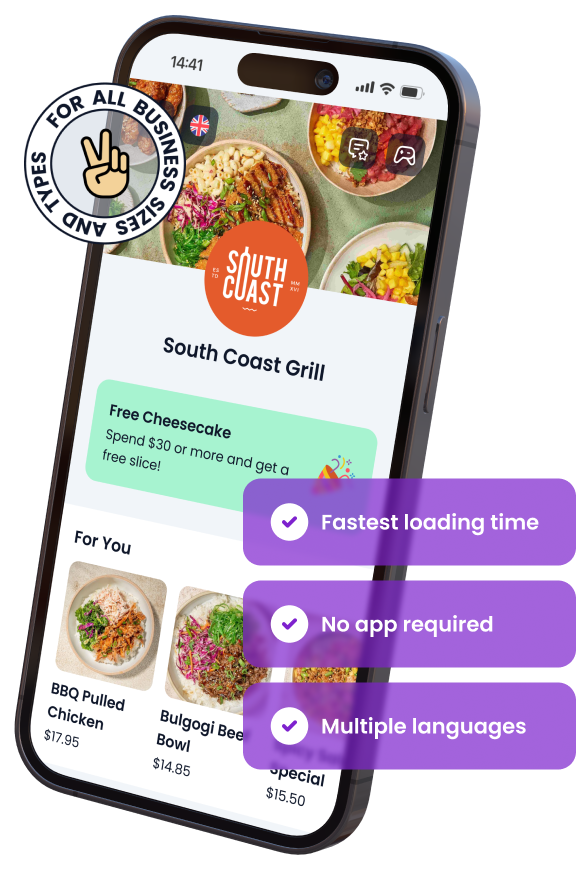
In This Article

Free AI Tools for Restaurants
TRY NOW ➜

Collect positive Google reviews
You can boost your restaurant’s credibility by effortlessly gathering Google reviews directly through your menu.


